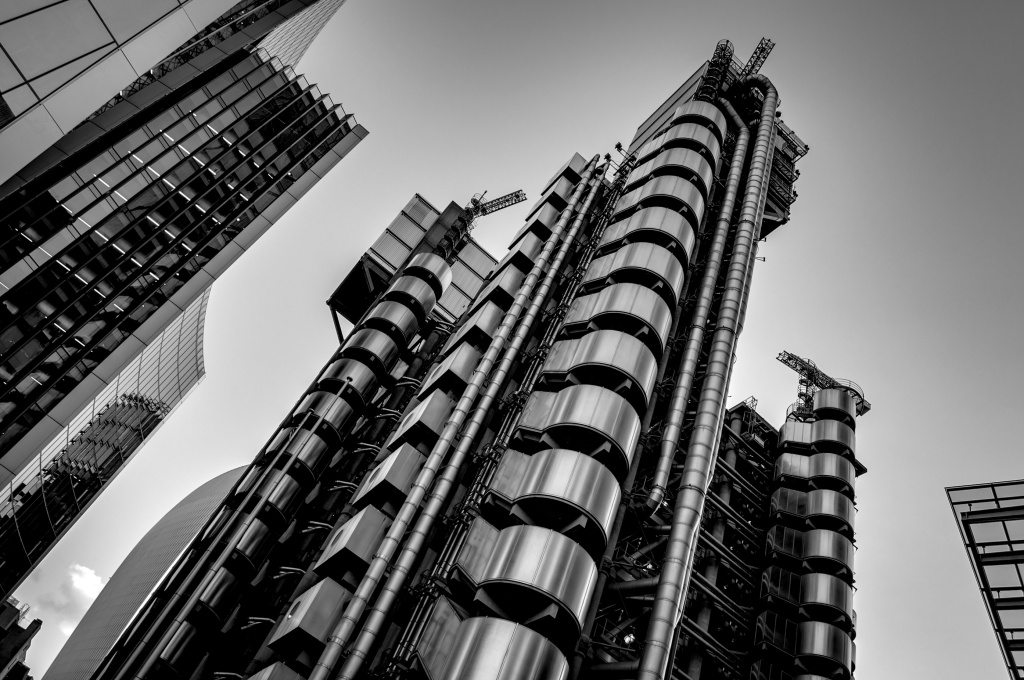In the heart of London’s financial district, a bold and iconic structure rises above the cityscape, redefining the very essence of modern architecture – The Lloyd’s Building. Designed by the visionary architect Richard Rogers, this architectural masterpiece stands as a testament to innovation, functionality, and a fearless departure from tradition. In this blog, we invite you to embark on a virtual tour of The Lloyd’s Building, delving into its groundbreaking design, revolutionary features, and the compelling reasons why a visit to this remarkable landmark is a must for architecture enthusiasts and curious minds alike.
A Beacon of Architectural Innovation
Completed in 1986, The Lloyd’s Building is a product of the visionary mind of Sir Richard Rogers, whose design philosophy revolves around transparency, adaptability and the integration of technology. The building’s unconventional appearance, often described as resembling an inside-out structure, challenges architectural norms and invites viewers to explore the intersection of form and function.
The Concept of “Inside-Out” Architecture
At first glance, The Lloyd’s Building captivates with its distinctive façade composed of glass, steel, and exposed services. The design emphasizes transparency, allowing visitors to witness the inner workings of the building, from escalators and staircases to ductwork and lifts. This “inside-out” approach not only celebrates the building’s mechanical systems but also grants a sense of openness and connection to its occupants.
A Dynamic Space for Exchange
Beyond its innovative exterior, The Lloyd’s Building houses a vibrant and flexible interior space that fosters collaboration and communication. The famous “Underwriting Room,” often referred to as the “Room of Truth,” serves as the heart of Lloyd’s of London, facilitating face-to-face interactions among underwriters, brokers, and clients. This unique space promotes transparency, negotiation, and decision-making – key aspects of the insurance industry’s operations.
Ingenious Structural Design
The structural design of The Lloyd’s Building is a marvel in itself. Its modular and adaptable framework accommodates future growth and reconfiguration, allowing for seamless updates and modifications. The lattice-like exterior supports the building’s load, eliminating the need for internal columns and maximizing the usable interior space. This innovative structural approach emphasizes efficiency and adaptability, hallmarks of sustainable design.
Integration of Public Spaces
The Lloyd’s Building blurs the boundaries between public and private domains, inviting passersby and visitors to engage with its architecture. Open-air spaces, terraces, and the adjacent St. Helen’s Square offer a tranquil respite within the bustling city, promoting a sense of community and connection. As you explore the building’s various levels, you’ll discover unexpected vantage points that provide unique perspectives of the surrounding urban landscape.
A Testament to Sustainable Practices
Long before sustainability became a mainstream concern, The Lloyd’s Building showcased principles of environmental responsibility. Its intelligent use of natural light, ventilation, and energy-efficient systems significantly reduces its carbon footprint. By incorporating eco-friendly design elements, The Lloyd’s Building serves as a trailblazing example of how architecture can align with environmental consciousness.
The Lloyd’s Building by Richard Rogers is more than just a landmark; it’s a living testament to architectural audacity, innovation, and the limitless possibilities of human creativity. By visiting this iconic structure, you’re immersing yourself in a world where tradition meets modernity, where transparency fosters collaboration, and where design transcends mere aesthetics to shape the very fabric of functionality and sustainability.
As you traverse its open spaces and dynamic interiors, you’ll be inspired by the harmonious marriage of architectural elements, the seamless integration of form and function, and the building’s role as a catalyst for connection and exchange. The Lloyd’s Building beckons you to explore, to ponder, and to celebrate the evolution of architectural thought. So, heed the call of innovation and embark on a journey to The Lloyd’s Building – a place where the future meets the present, and where architectural boundaries are pushed beyond the imaginable.

Leave a comment